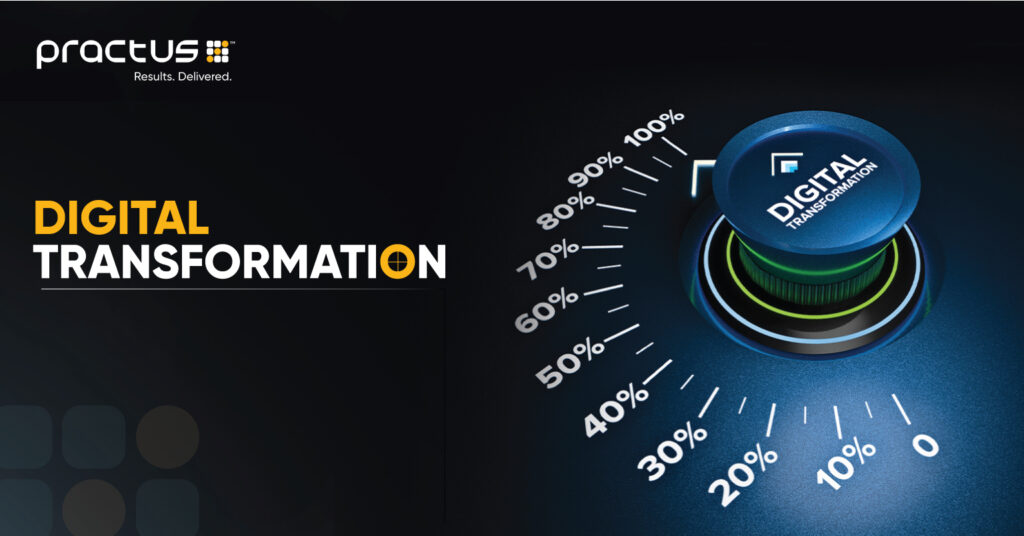“The lead performer is the compass of the production, directing its course and ensuring it arrives at the shores of achievement.” – Oprah Winfrey
Whether you prefer the theatre, musicals, symphony orchestras, moving pictures, rock shows, ballet, operas, or some other performing arts, you will agree that the lead stars can leave a lasting impression and drive the show’s success. Now imagine the grand stage of global commerce, where a remarkable performance is underway. The curtain-raiser is a smashing act by emerging technologies that are captivating industries on an unprecedented scale. As the spectacle unfolds, you witness a masterpiece, where a global superstar, called digital transformation takes center-stage, and data guides and propels the narrative to deliver a transformative performance.
The artistry of digital transformation has been sweeping across a plethora of small and large organizations over the last decade. From finance and manufacturing, to agriculture and healthcare, digitalization is breaking down barriers and redefining the rules of engagement not just across sectors, but for entire economies. Being at the helm of this transformation, US industries are harnessing the potential of data and technology and setting the stage for a global blockbuster. While their tech implementation strategies are steering them towards unparalleled growth, their data-based decisions are guiding and propelling them towards transformative success.

Digital Transformation is the Star of the Show
Converting traditional, manual, or labor-intensive operations into slick, future-ready, data-empowered actions, digital transformation is like a modern-day alchemist that can create, alter, or combine multiple variables to fundamentally reshape how an organization operates or delivers value. While global competition, regulatory pressures, and evolving customer expectations are accelerating rapid technology adoption, companies that are further along this path are already experiencing several benefits, including greater profitability and explosive business growth.

As per a McKinsey report, digital transformation and focus on customer experience can generate a 20-30% increase in customer satisfaction and economic gains of 20-50%.
Data and Technologies are the Key Supporting Cast
Digital transformation may be center-stage, but the twin spotlights are on data (including collection, analysis and utilization) and critical technologies (such as cloud computing, AI, cybersecurity solutions, blockchain, AR, VR and so on). And at the heart of this performance is the intricate choreography of technology adoption, process optimization, collaboration, and culture change. Although the success rate of digital transformations is less than 30%, there are several promising examples. From IKEA’s AR-enhanced shopping experience, and LEGO’s foray into gaming and 3D printing for deeper customer engagement, to Nike’s mobile app innovations for personalized offerings and Audi’s innovative showrooms that boosted sales and brand positioning, businesses across industries have benefited through well-defined strategies that harness the potential of data and new technologies.
Data-Driven Decisions are the Backstage Crew
Besides navigating the realms of data quality and technology (selection and implementation), the backstage crew of data-driven decisions can potentially:
- Craft enhanced customer experiences: Hyper personalization through automation, AI, and analytics has led to increased customer satisfaction. The best example of success here is Amazon’s recommendation engine that contributes to 35% of their sales, with nearly 56% likelihood of repeat buyers. Similarly, Netflix’s recommendation algorithm influences 80% of the watched content.
- Boost operational efficiencies: Identifying inefficiencies, streamlining processes, and optimizing resource allocation are just some of the outcomes of data-driven approaches. Organizations are increasingly leveraging Artificial Intelligence (AI) and Machine Learning (ML) to build predictive analytics on market trends, supply chain optimization, customer behavior, and more. According to a McKinsey study, companies making data-driven decisions are 23 times more likely to acquire customers, 6 times as likely to retain customers, and 19 times as likely to be profitable as a result.
- Drive innovation and lead to new business models: The transformative prowess of data-driven insights and decisions goes beyond incremental improvements, sparking new ideas that can lead to entirely new ways of doing business. For instance, both Uber and Airbnb capitalized on data-driven models, analyzing user preference and behaviors to create platforms that disrupted traditional industries and revolutionized the transportation and hospitality sectors.
This era of advanced technologies, data-driven insights, and digital transformation is ushering in new possibilities for businesses in the US and globally. However, such transformations come with formidable challenges and risks. Issues, such as skill gaps, resistance to change, cybersecurity threats, and ethical dilemmas demand a vigilant approach to data privacy, strong compliance on regulatory aspects, and appropriate safeguards to ensure robust data security. But US industries have realized early on that delivering a smash hit requires a solid line-up of performers who set them up for success. Which is why, embracing digital transformation, harnessing new technologies, and leveraging the potential of data-driven strategies will help them thrive in this era of unending possibilities.

